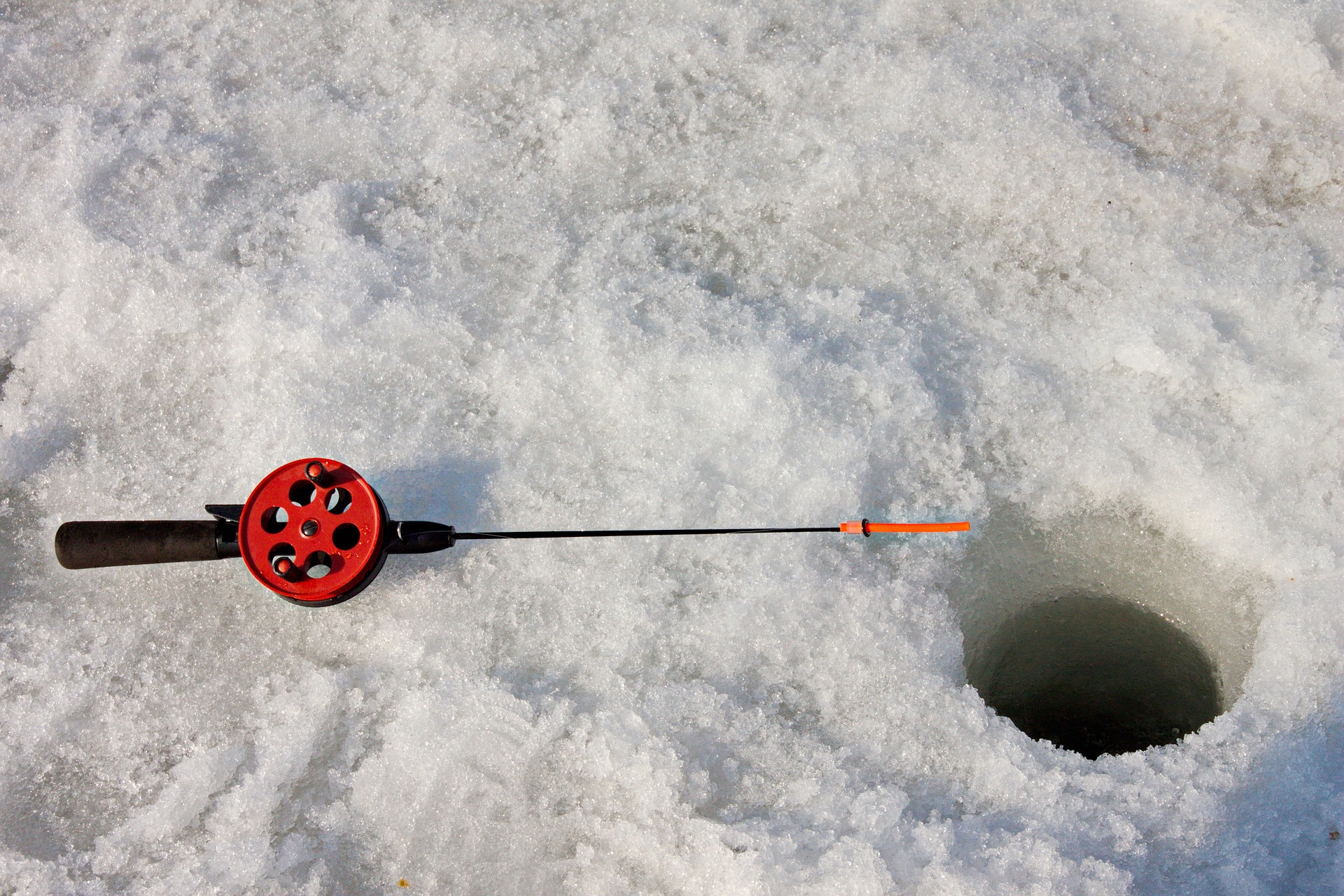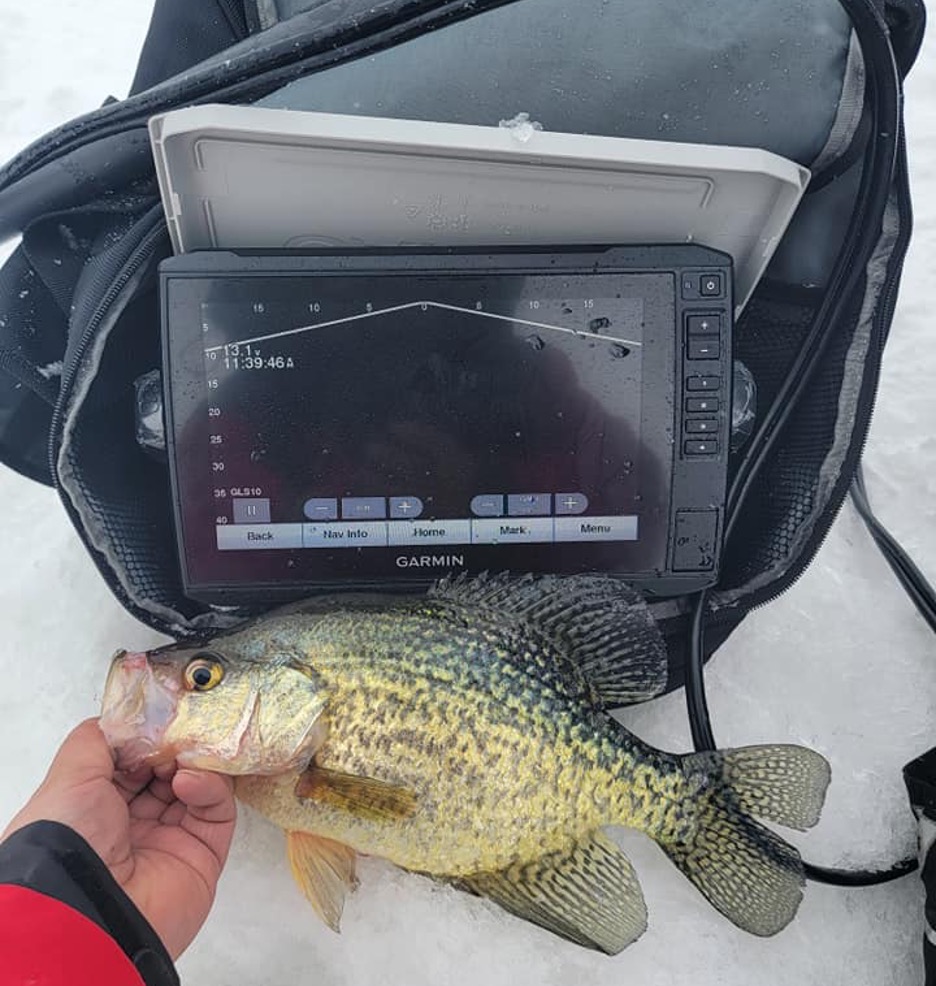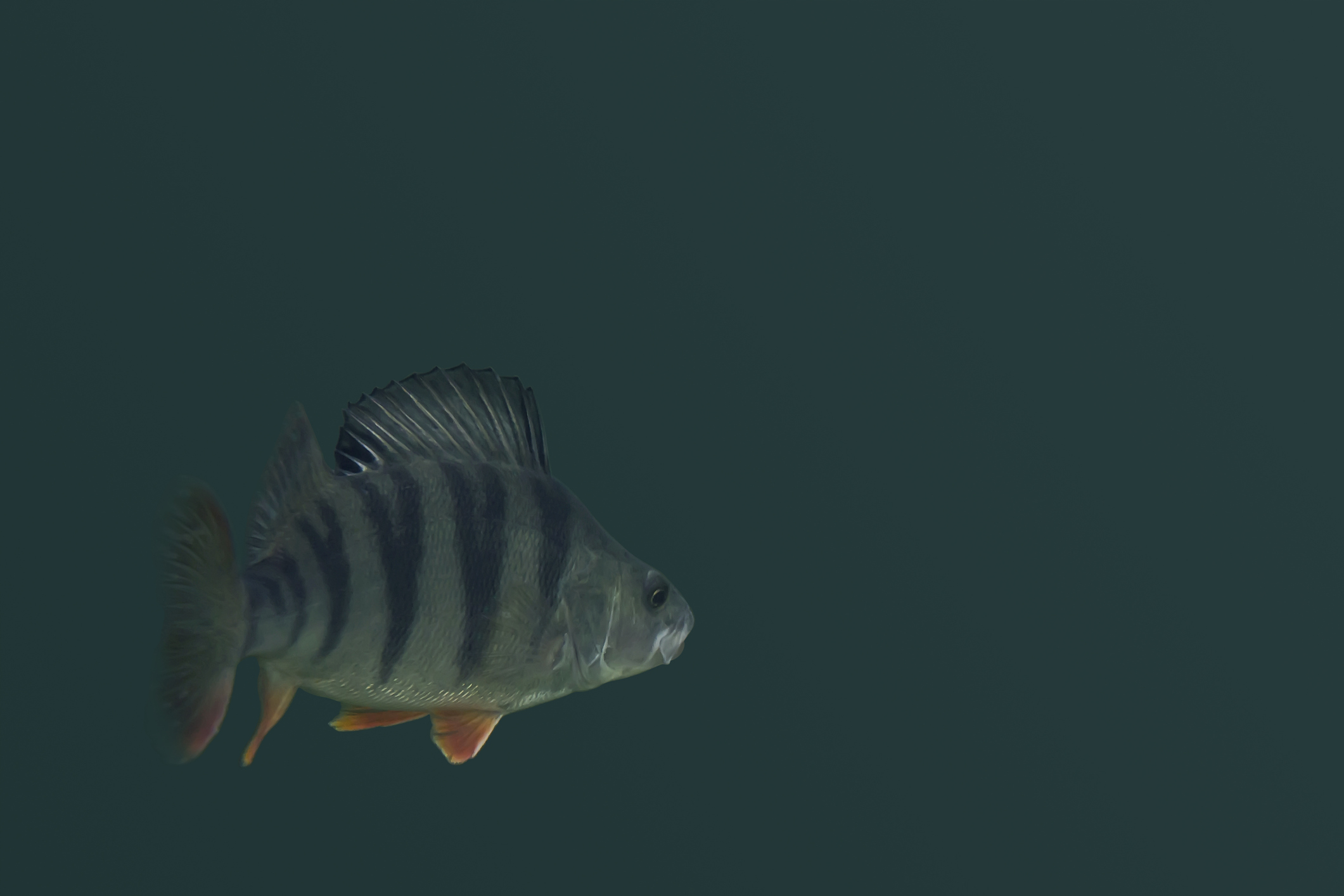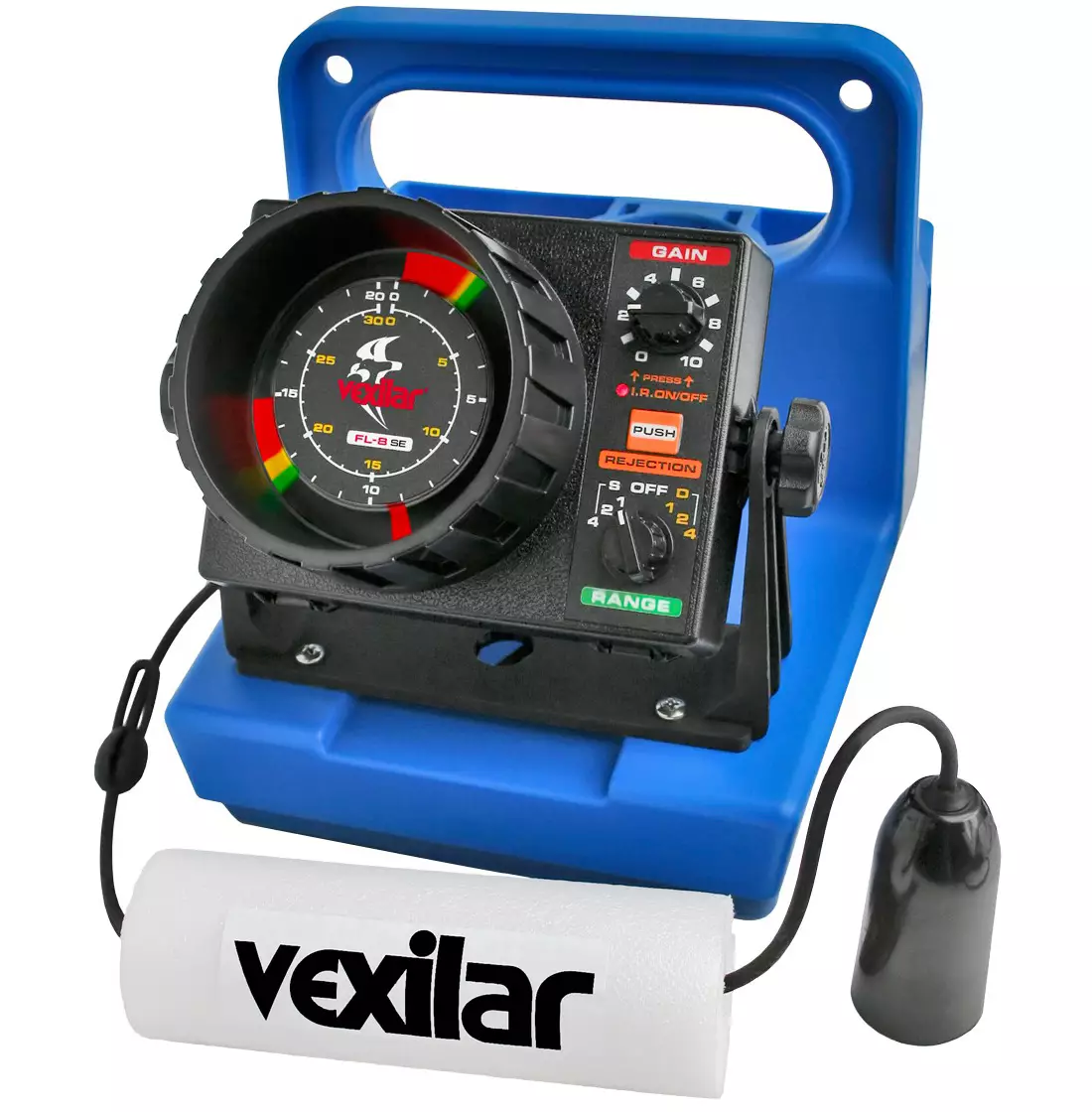WEnRV travel news, products, and industry trends
Getting the Ice Fishing Edge With Angling Flashers
It took me a long time to purchase an ice fishing flasher because I thought they were way more complicated than they are. The good news is, they’re actually simpler to use than a fish finder in a lot of ways. You just need to understand what the various colors and dials mean.
In this guide, I am breaking down all the finer details of ice fishing flashers so you can understand if buying one for your ice fishing trips is the right choice.
What is an Ice Fishing Flasher?
Ice fishing flashers can be difficult to understand. When I first looked at one, I thought they looked like some type of engineering device or something used to read the water quality. In reality, once you understand what every little dial and color means, they’re actually quite simple to use.
An ice fishing flasher is a piece of fishing technology designed to help you identify fishing opportunities beneath the ice. Using the flasher, you can figure out where the fish are, where the bottom is, what the total depth is and what type of structure or vegetation is scattered throughout the water.
How Does an Ice Fishing Flasher Work?

Vexilar Ice Fishing Flasher.
There are a few steps you’ll need to take to get your ice fishing flasher ready to use. I’ll break these down into bite-size pieces to help you better understand:
Setting the Transducer
To get started, you’ll have to power up your flasher and set the transducer length. The transducer is a cone attached to a cord that’s attached to the main unit. This is what you’ll insert down into the water to actually receive a reading.
The ideal length you choose will depend on various factors such as ice thickness, the length of the cord, and what type of fish you’re targeting.
You want to make sure it passes through the ice, so the sonar waves don’t bounce around, issuing a false return. The transducer should hang just low enough in the water so it doesn’t tangle around your fishing line.
Mark the Bottom
To figure out where everything is in the water column, you need to first mark the bottom. Once you’ve set your transducer you’ll find a red line at 0 on the display. That’s not the bottom; that’s the surface.
To find the bottom, you need to use the gain or sensitivity dial on your flasher and move up from 0 until a strong red line is developed on the display. This line is your bottom.
Now you can know that anything showing up on the display between 0 and the red line is either vegetation, structure, or a fish.

Photo: Igrishkoff/Pixabay
Wetting Your Line
One simple way to test that all the settings are right is by dropping a lure down into the hole and seeing if the flasher picks up on it. The bottom is indicated by a solid red line and the surface is indicated by the red line on 0.
When your lure is dropped, you should see it start at 0 and work its way down the indicator until it eventually reaches the solid red bottom line. The lure is usually indicated by a green or yellow color. Jigging it should show that the green line bobs up and down as you work the lure.
If the lure passes through other green and yellow lines along the way, that could be fish or it could be vegetation.
How to Read an Ice Fishing Flasher?
So far, there’s been a lot of “it could be” in this guide. The question is, how do you actually know when there are fish around?
Once you’ve dropped your lure down into the hole and you see it in the water column indicated by a green line, you might find that other green lines begin to enter the display as well. They may enter, pass through, and then disappear. These are fish.
Anything that shows on the display and doesn’t go away is vegetation or something in the water. The best thing about reading an ice fishing flasher is that you can actually see the fish moving towards your lure.
When you see green lines moving towards the green line indicated by your lure, you know that they’ve noticed the lure and might be investigating it. If you feel a nibble or a strike during this time, you can be sure that there’s a fish checking out your bait.
Ice Fishing Flasher vs. Ice Fishing Fish Finder

Garmin Fish Finder.
Why purchase a flasher instead of a fish finder? With a general overview, the flasher seems way more difficult to use, so why not just get a fish finder?
The main advantage of a flasher is the fact that it displays real-time information. A fish finder is showing you historical sonar based on what has been happening in the last few minutes because of the way the sonar works.
A fish finder transducer sends sonar waves down into the water and they bounce off of whatever gets in the way. A fish-finding flasher sends constant waves on sonar, so you’re getting an immediate response which makes it easier to react accordingly to what you see on the display.
Ice Fishing Flasher Pros:Ice Fishing Flasher Cons:Real-time dataOnly for vertical readingsCrisp resolutionCan only be used for ice fishingMore accurate readingsCannot be used while movingLonger battery lifeNo GPS features

Perch under ice. Getty Images
The fish finder has plenty of benefits as well. It’s more versatile, offers more features, and can be used across any season and any fishing situation. With flashers, you’re limited to using them only for vertical jigging and ice fishing.
Fish finders also offer a wide range of features, including GPS, mapping capabilities, chart plotting, side view, structure view, and the list goes on and on. Flashers are very limited. What they do, they do very well, but they can’t do anything else beyond that.
The best fish finders come with a high-quality display, LCD screen, and a plethora of features. The learning curve is about the same on both, but if you’re not tech-savvy, it might take you a while to understand how to use some of the more modern fish finders.
If you’re not a serious ice angler, you won’t want to get a flasher because you can only use them for ice fishing. Fish finders can be used all year long, so if you occasionally ice fish but do most of your fishing when the weather is warm, a fish finder is the better choice.
Fish Finder Pros:
More features Year-round fishing More purchasing options Better choice of sonarFish Finder Cons:
Not real-time information Shorter battery life Less portable Not all fish finders can be used for ice fishingGuide to Choosing the Best Ice Fishing Flasher

Flasher in action.
If you think that an ice fishing flasher might be the right option for you, there are some important things to consider before making a purchase. Here are some of the things to keep in mind when you’re shopping around for the best ice fishing flasher.
Depth Range
This feature consists of two parts. The first part refers to the actual total depth that the flasher can read. The second part is the number of depth readings you can take along the way. Most flashers should allow you to read at five or six different depths and the best ones will provide accurate readings up to 200 feet.
Target Separation
Target separation refers to the amount of space it takes between two objects for the technology to be able to identify it as two objects.
Think about it like this: If you have a school of fish, it’s going to be hard for the flasher to figure out that it’s actually a bunch of fish. It’s only going to show you that it’s one or two fish because they’re traveling close together.
When the flasher has optimal target separation, it means that it’ll pick up on multiple fish even when they’re close together. The goal here is to find a flasher with at least one-inch target separation. Since you’re working vertically with a flasher, the red line indicating the fish will tell you that it’s either below or above your lure.
Transducer Cone
The transducer is the object that sends sonar waves throughout the water when you put it down beneath the ice. The cone is a literal cone of sonar that comes out of the transducer. As it gets further down in the water, the cone becomes more spread out.
A wide-angle cone will cover a large area of water, but it will be less accurate. A narrow cone covers less water but will be more accurate. You want to shoot for a narrow beam in the range of 12-14 degrees. It’ll offer you enough space to pick up on a decent amount of fish while still ensuring accuracy.
Fishing in a Flash
Understanding how to use an ice fishing flasher is actually much simpler than it looks. The problem is, a lot of people are intimidated by these or they’ve never even heard of them.
In comparison to a fish finder, they’re the better option for ice fishing because they’re more accurate and better for vertical jigging, which is what most people will do when ice fishing anyway.
The post Getting the Ice Fishing Edge With Angling Flashers appeared first on Good Sam Camping Blog.
Copyright
© Good Sam Camping Blog



